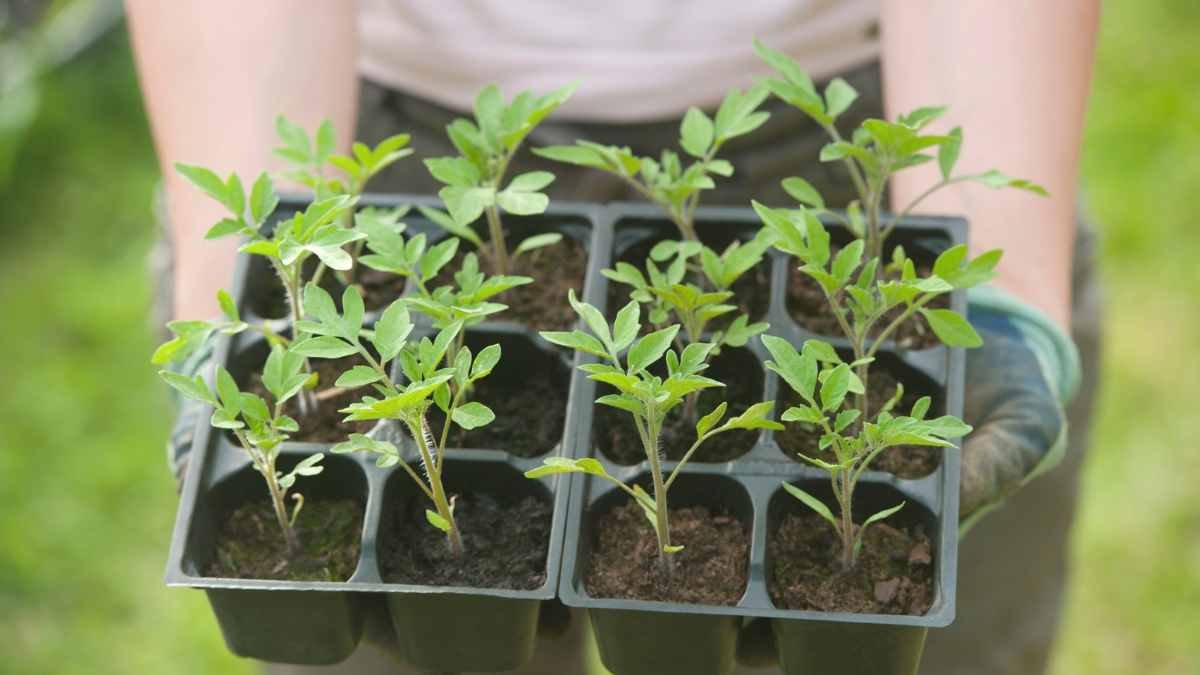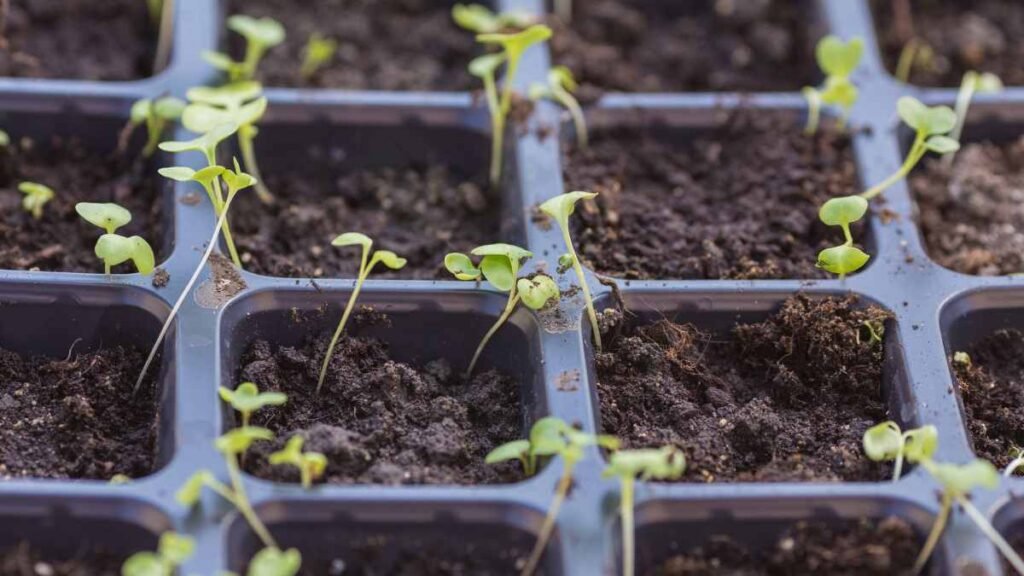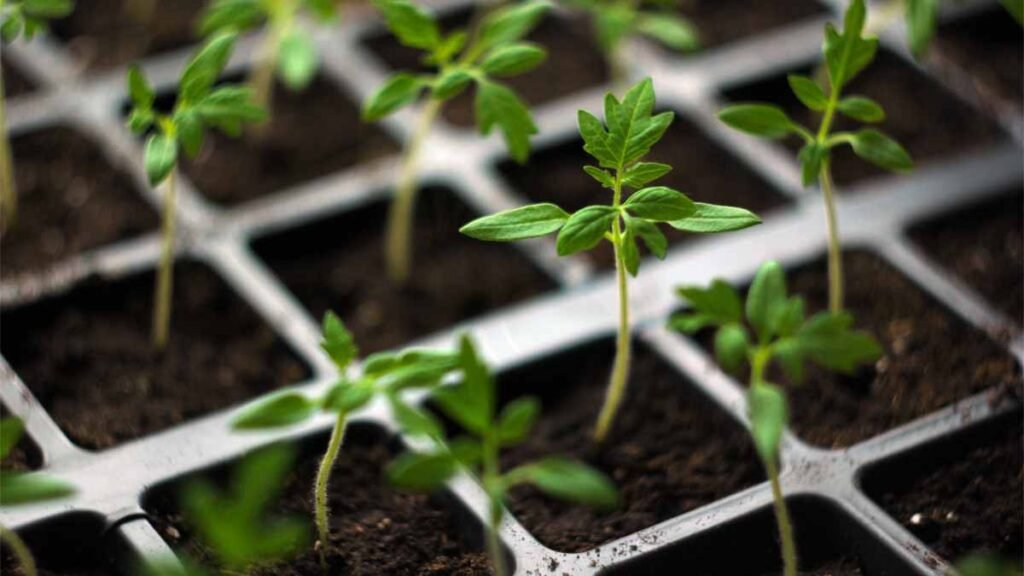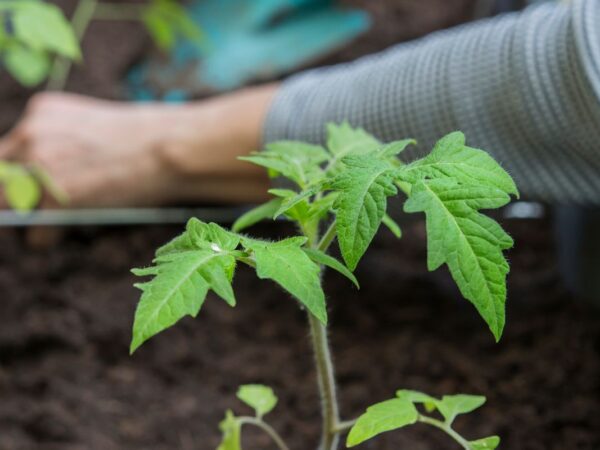
Germinating tomato plants is an essential step in starting your own home garden. If you're looking to cultivate thriving tomato plants from seeds, you've come to the right place.
To germinate tomato plants successfully, start by selecting high-quality seeds and a well-draining soil mix. Plant the seeds in small containers or seed trays, keeping them moist but not waterlogged. Place the containers in a warm, sunny spot or use a seedling heat mat to maintain optimal temperature conditions. Within 7 to 14 days, you should start to see tiny tomato seedlings emerging from the soil. Once they have developed their first true leaves, you can transplant them into larger pots or directly into your garden.
I'd love to share more tips on nurturing and caring for your tomato plants as they grow into healthy, productive specimens. Whether it's troubleshooting common problems or maximizing your harvest, there's plenty more to learn about cultivating delicious tomatoes at home.
Key Takeaways
- Select high-quality seeds: Choose tomato seeds that are fresh, disease-resistant, and suited for your region to ensure successful germination.
- Gather necessary supplies: Have essential items like seed trays, potting mix, and a watering can ready before starting the germination process.
- Follow proper planting techniques: Plant tomato seeds at the right depth, provide adequate moisture, and maintain consistent warmth for optimal germination.
- Implement effective germination tips: Use techniques such as pre-soaking seeds, providing bottom heat, and covering trays to enhance germination rates.
- Care for seedlings diligently: Monitor seedlings for proper growth, water them gently, and ensure they receive adequate light to develop into healthy plants.
- Thin out excess seedlings: Remove overcrowded seedlings to give the remaining ones space to grow and thrive, promoting stronger plants.
Seed Selection

Choosing Varieties
When selecting tomato seeds, consider the flavor profile you prefer - whether sweet or tangy. Look for unique colors like purple or striped tomatoes. Select varieties that thrive in your specific climate and growing conditions.
Understanding Seeds
To ensure successful germination, learn about the germination requirements of different tomato seed varieties. Understand the difference between hybrid and heirloom seeds in terms of characteristics and growth patterns. Consider purchasing seeds from reputable suppliers to guarantee quality.
Germination Rates
Be aware that germination rates can vary significantly between different tomato varieties. It is important to monitor seedlings closely for signs of germination to ensure healthy growth. Understand that factors such as temperature and moisture levels can impact germination rates.
Essential Supplies
Soil Types
Choosing the right soil mix is crucial for germinating tomato plants. Opt for a well-draining mix suitable for seed starting to prevent waterlogging issues. Consider incorporating perlite or vermiculite into the soil for better aeration and root development.
Container Choices
Select containers with proper drainage holes to avoid water stagnation, which can harm young tomato plants. Biodegradable pots are a convenient option for transplanting seedlings without disturbing their delicate roots. When choosing container sizes, factor in the expected growth of the tomato seedlings' roots.
Lighting Needs
Tomato seedlings require ample light to thrive and prevent legginess – a condition where they grow tall and spindly. Utilize grow lights to ensure consistent exposure to light, especially if natural sunlight is limited. Aim to provide the seedlings with 12-16 hours of light daily for optimal growth.
Planting Techniques

Preparing Soil
To ensure healthy tomato plants, sterilize the soil mix before planting to prevent diseases. Mix in compost for added nutrients and ensure proper aeration.
Sowing Seeds
For optimal germination, plant tomato seeds at the recommended depth. Gently press seeds into the soil for good seed-to-soil contact and label containers for tracking.
Depth and Spacing
Plant tomato seeds at a depth of 1/4 inch and space them at least 2 inches apart to prevent overcrowding. Follow spacing recommendations based on mature plant size.
Germination Tips
Maintaining Moisture
To promote successful germination, keep the soil consistently moist without overwatering. A spray bottle is ideal for gentle watering to prevent seed disturbance. Consider covering containers with plastic wrap to retain essential moisture levels during the germination process.
Temperature Control
Maintain an optimal temperature range for germinating tomato plants. Ensure a warm environment between 70-80°F to support seed germination. Avoid exposing seeds to extreme cold or heat, as this can hinder the germination process.
Seedling Emergence
Once seeds have sprouted, provide adequate light for healthy growth. Place seedlings in a sunny location or use grow lights if natural light is insufficient. Monitor the growth progress closely and adjust lighting conditions as needed.
Seedling Care
Providing Light
Tomato seedlings require ample sunlight to grow healthy and strong. Place them in a sunny spot.
To ensure proper growth, rotate the trays regularly so all sides of the seedlings receive even light exposure.
Watering Seedlings
When watering tomato seedlings, avoid overwatering as it can lead to damping off. Use a spray bottle for gentle watering.
Ensure the soil is moist but not soggy, allowing the top layer to dry out slightly between waterings.
Monitoring Growth
Regularly check the seedlings for any signs of stress or disease, such as yellowing leaves or mold growth.
Keep an eye on the growth rate, ensuring that the seedlings are developing at a healthy pace.
Thinning Seedlings
When to Thin
Tomato seedlings should be thinned out when they have developed their first set of true leaves. This typically occurs when the seedlings are around 2-3 inches tall. Thinning at this stage ensures that the remaining plants have ample space to grow.
It is important to thin the seedlings before they become overcrowded, as this can lead to competition for nutrients and sunlight. Overcrowding can weaken the plants and affect their overall health and productivity.
How to Thin
To thin tomato seedlings, carefully grasp the excess seedling near the soil line and gently pull it out. Be cautious not to disturb the roots of the remaining seedlings. Ensure that you leave an appropriate amount of space between each plant, usually around 18-24 inches apart.
Thinning helps in promoting better air circulation around the plants, which reduces the risk of diseases such as damping off. It also allows each plant to receive adequate sunlight, water, and nutrients for optimal growth.
Fertilizing Strategies
Choosing Fertilizer
When fertilizing tomato plants, opt for a balanced fertilizer with an N-P-K ratio of 10-10-10 or 5-10-5. This ensures essential nutrients like nitrogen, phosphorus, and potassium are provided. Organic options like compost, manure, or fish emulsion are excellent choices for sustainable growth.
To determine the right fertilizer, consider factors like soil composition and plant growth stage. For seedlings, use a starter fertilizer low in nitrogen to prevent burning delicate roots. Mature plants benefit from a slow-release fertilizer that sustains growth over time.
Fertilizing Schedule
Establish a consistent fertilizing schedule based on plant development stages. During the growing season, apply fertilizer every two to three weeks to promote healthy foliage and fruit production. Adjust feeding frequency based on plant response and nutrient deficiencies.
In early spring, provide a balanced fertilizer to support initial growth spurts after transplanting seedlings outdoors. As flowers appear, switch to a bloom-booster formula high in phosphorus for robust fruit development.
Transplanting Techniques
Preparing for Transplant
To ensure successful transplanting of tomato plants, start by selecting a suitable location with adequate sunlight. Prepare the soil by adding organic matter such as compost to improve its quality. Water the plants thoroughly a day before transplanting to reduce shock.
When preparing for transplant, make sure to harden off the seedlings by gradually exposing them to outdoor conditions. This process helps them acclimate to temperature changes and reduces transplant shock. Prune any damaged or diseased leaves to promote healthy growth post-transplant.
Transplanting Steps
Begin by digging a hole slightly larger than the root ball of the tomato plant. Gently remove the plant from its container, being careful not to damage the roots. Place the plant in the hole, ensuring that it sits at the same depth as it was originally planted.
Next, backfill the hole with soil, pressing gently to secure the plant in place. Water thoroughly after transplanting to help settle the soil around the roots. Consider using a starter fertilizer high in phosphorus to encourage root development and overall plant growth.
After transplanting, provide adequate support for the tomato plants by using stakes or cages to prevent them from bending or breaking under their weight as they grow. Monitor moisture levels regularly and water deeply when needed, especially during hot weather conditions.
Ongoing Maintenance
Watering and Feeding
Tomato plants require consistent watering to thrive. Ensure the soil remains consistently moist but not waterlogged. Overwatering can lead to root rot.
Feeding your tomato plants with a balanced fertilizer is crucial for their growth. Use a fertilizer with equal parts nitrogen, phosphorus, and potassium.
Disease Prevention
Preventing diseases in tomato plants is essential for a successful harvest. Rotate your crops yearly to reduce the risk of soil-borne diseases.
Mulching around your tomato plants helps prevent soil splashing onto the leaves, reducing the chance of fungal diseases.
Pest Management
Inspect your tomato plants regularly for signs of pests such as aphids or caterpillars. Handpick any visible pests to prevent infestations.
Introducing beneficial insects like ladybugs or lacewings can help control pest populations naturally without the need for chemical pesticides.
Closing Thoughts
In mastering the art of germinating tomato plants, you've equipped yourself with the essential knowledge to kickstart a successful gardening journey. From selecting the finest seeds to nurturing seedlings and beyond, your dedication will yield bountiful results. Remember, proper care and attention are key ingredients in fostering healthy tomato plants that will soon grace your garden with vibrant colors and flavors.
Now that you're armed with the know-how, it's time to roll up your sleeves and get your hands dirty. Put your newfound expertise into action, experiment with different techniques, and watch your tomato plants thrive. So go ahead, embrace this green-fingered adventure and witness the fruitful rewards of your labor bloom before your eyes.
Frequently Asked Questions
How to choose the right seeds for germinating tomato plants?
Select seeds based on your climate zone and preferred tomato variety. Look for reputable seed suppliers offering organic, non-GMO seeds for optimal results.
What essential supplies are needed for germinating tomato plants?
Gather potting mix, seed trays, labels, a spray bottle, and a heat mat. Ensure you have adequate lighting and a warm environment for successful germination.
What are the best techniques for planting tomato seeds?
Plant seeds in moist soil at a depth of 1/4 inch. Keep the soil consistently moist and provide warmth to aid germination. Consider using a humidity dome to create an ideal environment.
How can I ensure successful germination of tomato seeds?
Maintain consistent moisture levels, warmth, and adequate light during the germination process. Avoid overwatering or letting the soil dry out completely to support healthy seedling growth.
When should I start fertilizing my germinated tomato seedlings?
Begin fertilizing your tomato seedlings once they develop their first set of true leaves. Use a balanced fertilizer diluted to half strength to avoid overwhelming the young plants.
Image Source: Paid image from CANVA



